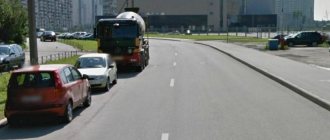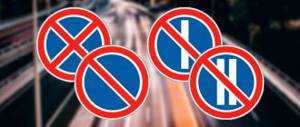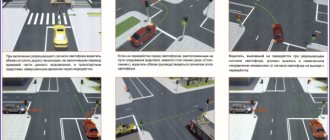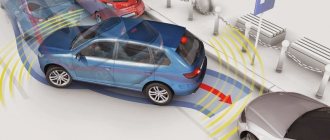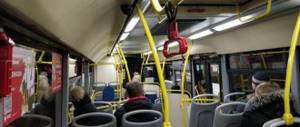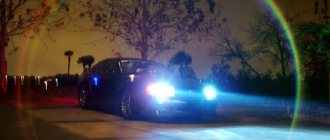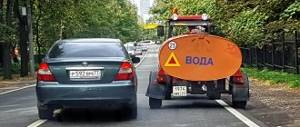- December 5, 2019
- Automobile law
- Yulia Lobach
In this article we will look at parking lot markings.
For safe road traffic and economical use of parking areas and parking lots, correct and competent markings in the parking lot are necessary.
Today, any trip for every car enthusiast turns into an adventure in finding a free parking space. The situation with parking is most difficult in the historical centers of large cities and in the courtyards of old buildings, where the urban plan does not provide space for the number of cars that there are today.
The dimensions of parking lot markings are regulated by GOST (51256-2011). If a citizen knows such information, it will be easier for him to defend his own rights if, for example, a car was hit and dented in a parking lot due to a narrow passage.
The concept of parking - what is it?
A park is usually understood as a designated area that must have a fence, an appropriate road sign and markings. Car spaces are provided free of charge, for example, in parking lots located near public places, or for a fee if the parking is municipal or private. Municipal parking lots usually use the Parkon automated parking system.
To assign an area the official status of a parking lot, it must be registered and formalized in accordance with all legal requirements. Currently, the parameters of parking areas are regulated by SNiP 113.133330.2016 with the title “Car Parking”.
We will explain below what types of parking markings there are.
Signs with plates
In addition to the already mentioned pointers 8.8, 8.2.1, there may be other symbols next to 6.4. Paid parking signs with plates 8.6.1-8.6.9 will tell you how to position your car. Depending on the image, it can be placed along the sidewalk or perpendicular to it, etc.
More on AutoLex.Net:
Basic traffic rules: driving in lanes, signs and restrictions, three-lane rules
Sometimes only a certain type of vehicle is allowed in the parking lot. This is evidenced by plates 8.4.1-8.4.8. If one of them is next to the paid parking symbol, parking all other types of equipment is prohibited.
Locations of parking areas
The location of the parking area and markings depends on many factors:
- Size (number of parking spaces).
- Distance from public places and environmental sites.
Any parking lot must be safe, and the list of potential threats from parking areas, even if they are located outdoors, is quite extensive: exhaust fumes, gasoline leaks, road accidents, fires.
If we think from the other side - from the point of view of the car owner, then the most convenient parking is the one that is located closest to the required place. Usually, no one wants to walk an extra distance to a hospital, shopping mall, office or any other public place.
The distance at which parking markings should be located from urban planning objects is regulated by SNiP “Car Parking”.
If a car park can accommodate 10 or fewer cars, it must be located 10 meters from public buildings and residential buildings. Such car parking should be at least 25 meters away from public gardens, city parks, playgrounds and sports grounds, hospitals, schools and kindergartens.
Parking lots accommodating 10-50 cars should be located at a distance of 15 meters from residential buildings whose walls have windows, and at a distance of 30 meters from hospitals, schools, kindergartens and other similar buildings.
Open parking areas accommodating up to 100 cars must be 25 meters away from residential buildings. They should be located at the same distance from various public institutions.
Large car parks with up to 300 parking spaces should be located:
- at a distance of 35 meters from residential buildings with windows;
- 50 meters - from kindergartens, vocational schools, schools, and other children's institutions;
- 60 meters from recreational areas for citizens, sports grounds and stadiums, and medical institutions.
Car parks with a capacity of over 300 cars must be 50 meters away from residential buildings with windows. Other requirements for such parking areas do not change. As for huge parking lots that can accommodate 500 cars or more, they are recommended to be located exclusively in industrial zones.
SanPiN 2.1.4.1074 prohibits the placement of open parking areas in areas where water intake for domestic and drinking purposes occurs.
How can I pay
Payment for the service is carried out in one of the following ways:
- Through a special terminal. This can be done using a scratch card or bank card purchased in advance from a mobile operator. One of them is inserted into the device, select the “Pay” option, enter the parking time, parking number, and other requested data.
- By sending an SMS to number 7757. It must contain vehicle data, parking time, and parking information. The money will be withdrawn from the phone. The stay time can be extended by sending an additional message, for example, “x1” (for 1 hour). Before leaving the place ahead of schedule, you should send an SMS with the letter “S”. The rest of the money will be returned to the owner.
- Through an application installed on the phone. You need to register on the city parking website and deposit funds into your account. When entering a paid parking lot, you should log into your account in the application and use the “Park” option. From this moment the countdown for the provision of the service will begin. When leaving, you need to use the “Leave” option.
More on AutoLex.Net:
Interpretation of the sign in the traffic rules “Moving”, warning, limiting signs, requirements
The payment can also be transferred through a regular terminal by selecting the appropriate section. Or buy a subscription valid for municipal commercial parking lots.
Dimensions of parking spaces in open parking lots
The size of a parking space for 1 car in a parking lot is easy to calculate if you know that the following parameters are the minimum:
- The length of the parking space is 5.3 meters.
- The width of the parking lot is 2.5 meters
Moreover, the width of the marking, which is 10 cm on each side, is not taken into account. That is, a parking space must have a minimum area of 13.25 square meters.
It is important that the standard length of a car is considered to be 4.4 meters, width - 1.8 meters.
At the discretion of the owners of the parking area, the size of the parking space may be increased. For example, parallel parking will be most comfortable if the length of one parking space is 8.8 meters, that is, equal to the length of 2 standard cars. In this case, the comfortable size of a parking space is considered to be the width of a standard car plus 1 meter, that is, 2.8 meters. This width of the parking space allows you to ensure the safety of the driver or his passenger getting out of the car.
If we talk about herringbone parking, then more space is needed. According to the standard, one such parking space must have an area of 18 square meters.
Parking spaces intended for parking cars for disabled people reach their maximum dimensions. Their width reaches 3.6 meters, and their length is 6.2 meters.
The law allows deviations from the specified dimensions, but such a deviation must be within 5 cm. Such dimensions are primarily due to fire safety measures. In addition, they help reduce the likelihood of accidents in parking areas.
What are the standards for parking lot markings?
Is it allowed to park on a rounded triangle
In order to avoid getting into trouble and paying a fine, you need to take into account all the circumstances of the situation. As lawyers emphasize, the outcome of the case will depend on the location of the semicircular markings. According to clause 12.4. Traffic regulations, it becomes clear that parking on this marking is prohibited. Moreover, not only parking is prohibited, but also stopping. Probably the only exception would be a car breakdown or similar situations.
After all, then a car parked in this place will create a serious obstacle for other vehicles:
- the car may create an obstacle when entering or exiting the adjacent territory (gas station, yard or parking lot);
- other drivers will not be able to see nearby signs or traffic lights changing.
Important to remember! Parking is prohibited closer than 5 meters from the intersection with the markings. Although there will be an exception when the semicircular markings are applied far from the roadway. Then parking is theoretically possible.
Simply put, if a parked car on a semicircular marking obstructs the view of other drivers, this is considered a violation. Therefore, there is a high probability that the offender will be taken away by a tow truck, and the driver himself will pay a fine. Although most often in large cities such as Moscow or St. Petersburg, it is a lottery. Today a tow truck took an illegally parked car to the impound lot, and tomorrow it will simply be ignored.
Technical requirements for marking parking spaces
Technical requirements include not only the organization of the parking space as a whole, but the materials from which the fences are made and with which markings are applied:
- If parking is located in the local area, then it must have clearly defined boundaries. To create its boundaries, a side stone should be used.
- The pole or vertical support must have clear reflective markings. In particular, this paragraph applies to parking areas located in courtyards.
- To apply markings to asphalt pavement, thermoplastic or nitro paint should be used. But practice shows that white water-based paint is often used for this purpose, which is washed off by precipitation in less than a season.
What are the fines for parking on a rounded triangle in the Russian Federation?
Indeed, drivers are punished for parking on semicircular markings:
- According to clause 4 of Art. 12.19. Code of Administrative Offenses of the Russian Federation, penalties will amount to about 2 thousand rubles.
- In large cities, the violator will have to pay more. The fine will be about 3 thousand rubles (clause 6 of article 12.19 of the Code of Administrative Offenses of the Russian Federation). The fine amount is higher due to the risk of traffic jams caused by a car parked on the markings. In large cities with a large concentration of cars, traffic can easily be paralyzed if traffic rules are not followed.
However, what is worse for the driver is not so much paying the fine as the risk that the car will be taken by a tow truck to the impound area. They charge a hefty fee for maintaining the cars.
Disabled parking space
Let’s talk about the “Parking for disabled people without sign” markings.
In the modern world, many car owners have limited capabilities, that is, they are disabled. There are especially many who use a wheelchair. Special standards have been developed for citizens of this category. To begin with, the size of the parking space has been increased to 3.6 * 6.2 meters. This is necessary so that a person in a wheelchair can move unhindered between the car rows. In addition, parking spaces for disabled people should be located as close as possible to the entrance of the building.
Car spaces intended for disabled people occupy approximately 20% of the entire parking area. Typically, spaces for the disabled can be found in parking lots near hospitals, shops, shopping centers, residential complexes and other public buildings.
Rules for marking
The organization of parking spaces and territories must meet the requirements:
- rules for using marking lines on roads - GOST 52289-2004;
- classification of road markings and requirements for it - GOST 51256-2011;
- road signs accompanying the parking zone - GOST 52290-2004;
- requirements for materials of marking lines - GOST 52575-2006;
- requirements for the layout of indoor and outdoor parking lots - SNiP 21-02-99;
- Movement and maneuvering in parking lots is regulated by the Traffic Rules of the Russian Federation.
Technical requirements
The marking requirements are:
- Wear resistance and indelibility in conditions of frequent mechanical damage and the influence of natural phenomena (rain, snow, etc.).
- Readability at any time of the day and good visibility in all seasons.
- Technical compliance of application, according to GOST.
IMPORTANT! The minimum permissible dimensions of a parking space are 5.3x2.5 m. The maximum permissible dimensions of a parking space are 6.2x3.6 m. Spaces for disabled people may be larger than for other motorists.
Solid line, dotted, transverse, vertical, as well as numbering of parking spaces and images can be used. The lines are applied using one of three materials: road paint, cold plastic or thermoplastic. Also, polymer tapes can be used. The cheapest and most short-lived material is paint: its service life is only 6 months.
When applying markings, it is important that:
- no old marking line remains;
- the deviation from the planned position was no more than 0.05 meters;
- The applied material met the requirements of density, color, and brightness.
The following rules for placing vehicles apply:
| When placing cars at an angle to the sidewalk line | 45° | 60° | 90° |
| Width, m | 5 | 5,4 | 5,5 |
| Required area, sq m for 1 car | 18 | 16 | 13 |
| Number of cars placed on a 100 m long strip | 31 | 38 | 43 |
For invalids
Parking spaces for disabled people are indicated by sign 6.4. Based on paragraph 6.2.28 of GOST R 52289-2004, markings 1.24 are used to designate sections of roads, parking areas (parking spaces), entrances, exits, etc., intended for vehicles driven by disabled people of groups I and II or transporting such disabled people. .3. The parking area for disabled people should be larger than for other motorists.
In the absence of appropriate markings, a driver who does not have disabled status must independently take into account the distance intended for a parking space for disabled people.
IMPORTANT! People with the appropriate identification can park in spaces for disabled people. If this is not the case, then a fine will be imposed.
Criteria and characteristics
The listed requirements for marking parking spaces cannot be met without innovative materials. Today, along with traditional waterproof and frost-resistant paints, others are used that differ in physical and mechanical characteristics and application technology:
- Thermoplastic – gives good adhesion to the asphalt surface; due to the presence of bitumen, functional durability increases significantly.
- Cold plastic - thanks to special additives, hardening occurs instantly; it contains reflective balls, they can be seen even at night.
- Polymer tapes are a durable material, the unique properties of which (a double optical system improves reflective characteristics) are set during the production process.
The marking material used for marking must have a warranty period:
- for paints and varnishes – six months;
- for various types of plastic material - from one and a half to three years.
Preferential conditions
Each parking lot must have a certain number of marked zones, decorated with an appropriate image on the roadway and a sign (the traffic police are responsible for identifying these). If there is no sign, the location may be indicated by an additional sign. But even if there is none, the designated area can only be occupied by persons with disabilities. The “Parking for the Disabled” sign does not cancel the effect even without markings, but in this case, it applies to three parking spaces at once (one on each side).
It is important to know! Violation of parking rules in a space reserved for persons with disabilities will result in a fine.
High-quality markings in paid parking in accordance with GOST are a guarantee of safety, because they are created not only to optimize the operation of the parking lot, but also to minimize emergency situations.
Terms and Requirements
The process requires careful planning and professional skills. Sequence of work:
- Preparation and calculation - at this stage, measurements are taken, a project is drawn up and material is selected. Not only the dimensions of the vehicles and their number are taken into account, but also the space needed for free maneuvering. Seats for disabled people are required; their number ranges from ten to twenty percent of the total area (the area should be wider for the convenience of the driver or passenger, and located closer to the exit).
- Execution of work - during application with any material, the temperature should not exceed twenty degrees and be below twenty-five. When reapplying, old lines must be completely removed, or new ones must be placed strictly on top of them (to avoid confusion, no duplication or double lines) and signs must be installed.
- Revision - no devices (bollards, columns, fences) should interfere with parking or reduce the minimum size. In storage areas for fire extinguishing agents and other important areas, lighting is improved or luminous paints are used.
Work on the street and in covered parking lots differ in technical requirements.
